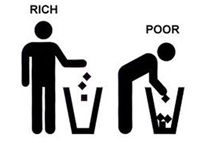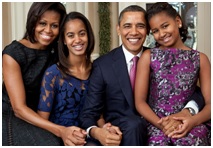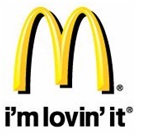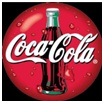|
 |
|
 |
|
|
||
Market segmentation
Market segmentation is... Dividing customers into different groups (called market segments). Selling to small market segments (or niches) is called niche marketing.
Market segments should be:
How useful is market segmentation?
A market segment will affect marketing’s 4 P’s (see marketing and customer satisfaction). For example:
Market segment – rich customers
Market segmentation lies between two extremes:
How to segment customers
1. Population characteristics (demographic segmentation)
a) age (e.g. baby food).
b) gender (male/female) e.g. cosmetics for women and cars for men.
c) culture/ethnic origin (e.g. food).
d) income (e.g. luxuries for the rich).
e) occupation (e.g. textbooks for students).
f) education (e.g. Shakespeare plays for literature lovers).
g) religion (e.g. the Bible and the Qu’ran).
h) family life cycle (stage of life reached) –
i) generation
j) social class
In Britain social classes are grouped in eight categories (replacing the old A,B,C1, C2,D,E classification in 2001): 1. Higher professional and managerial (previously A). 2. Lower professional and managerial (B). 3. Intermediate occupations – more senior clerical and sales jobs (C1 and C2). 4. Small employers and non-professional self-employed (C1 and C2). 5. Lower supervisory and skilled manual workers (C1 and C2). 6. Semi-routine occupations – semi-skilled workers (D). 7. Routine occupations – unskilled workers (D). 8. Long-term unemployed (E).
2. Lifestyle (or psychographic) segmentation
This is dividing customers up according to their values and aspirations i.e. the sort of person they want to be. So examples of lifestyle segments are:
3. Customer behaviour (behavioural segmentation)
a) benefits sought (tangible benefits like quality and intangible e.g .image) McDonald’s (pictured right) gives these benefits: taste and quality, comfort, cleanliness and speed of service.
b) usage rate (light, medium, heavy users).
c) buyer status (e.g. potential, first time, regular).
d) occasions (holidays and events that boost sales e.g. turkeys at Christmas). e) brand loyalty. (loyalty to a brand because of quality, image etc. like Coca-Cola, pictured right)
4. Location (geographic segmentation) Where customers live (town, country, etc.)
Key quotes explained
“Close to the customer” - Tom Peters (pictured right) and Robert Waterman (pictured right below) in their book In Search of Excellence.
The best companies know their customers and how to divide them up into profitable market segments.
“Men are from Mars, women are from Venus” - John Gray (pictured right), the title of his 1992 book. Gray’s best-seller highlighted the psychological differences between the sexes – men like power but women put people first.
“If we cannot now end our differences, at least we can help make the world safe for diversity” - John F. Kennedy , American president (pictured right) We must satisfy the needs of different groups and respect their rights.
Best books
Alvin Toffler (pictured right) , Future Shock (1970) Forecasted the growth of niche marketing through the “de-massification” (i.e. segmentation) of markets. (For more detail see Future Shock in the Business Books section)
Chris Anderson (pictured right) , The Long Tail (2006) A huge number of small, segmented markets (the “long tail”) have been created by the Internet’s ability to dramatically reduce the costs of reaching customers (e.g. eBay).
|
|
|
||
|
|
||
| Copyright © wisdomtowin.com 2025 All Rights Reserved | ||
|

















